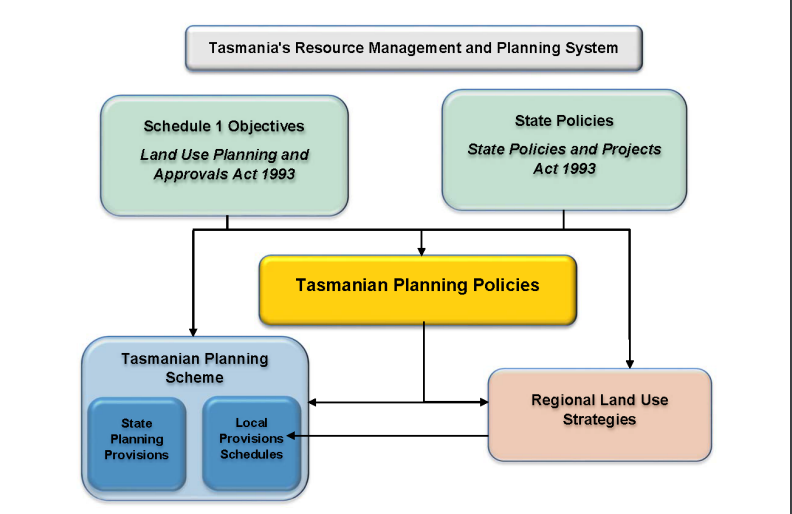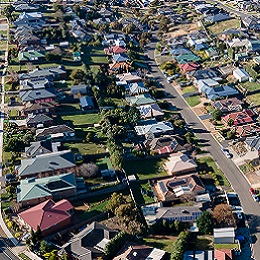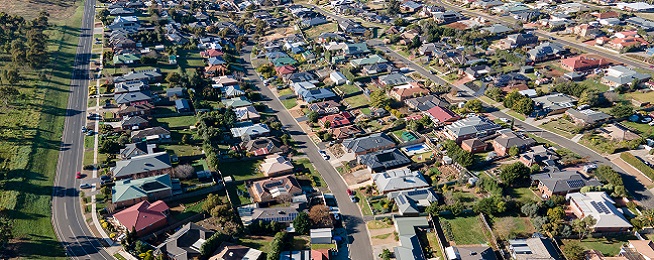The Tasmanian Government has released a scoping paper outlining the options for new planning policy guidance that could include provision for more cycling infrastructure.
For years we’ve seen new residential and commercial developments pop up across the state with no safe cycling infrastructure. Just as developers are made to provide roads and footpaths, they should also be providing cycleways and buildings with accessible entry and parking for bicycles.
The Tasmanian Planning Policies (TPPs) are intended to guide local planning policies and regional land use strategies.
Under the legislation (Land Use Planning and Approvals Act) the TPPs may cover the following:
- the sustainable use, development, protection or conservation of land
- environmental protection
- liveability, health and wellbeing of the community
- any other matter that may be included in a planning scheme or a regional land use strategy.
When the law was changed to allow the TPPs to be developed, draft TPPs were released to show what the policies could look like.
Under these draft TPPs, direction on bicycle infrastructure was provided in the Liveable Communities policy:
1.5 Encourage quality, innovative architecture and urban design that:
…
- c) maximises pedestrian and cyclist connectivity and permeability
…
And in the Transport and Infrastructure policy:
Strategies
…
1.5 Provide for public transport, walking and cycling infrastructure as part of new and upgraded road infrastructure, wherever possible.
…
Passenger and Active Transport
Land use planning plays a key role in supporting safe and efficient access to Tasmania’s public transport, walking and cycling networks. Use and development should align with existing public transport networks, and provide new and upgraded local active transport connections, wherever possible.
Objective
To support safe, efficient and accessible public transport, walking and cycling networks, connecting people to employment, education, essential services and social activities.
Strategies
4.1 Locate developments that attract high numbers of people within existing activity centres and/or adjacent to key public transport corridors.
4.2 Locate new residential and major new commercial developments in areas that are capable of being supported by the existing public transport network or support a logical extension of the network.
4.3 Ensure existing and new residential development supports walking and cycling by providing infrastructure that maximises safe connectivity, and minimises travel distances to and from key destinations.
4.4 Maximise the use of alternative modes of transport through the provision of pedestrian and cycle infrastructure and facilities within and to existing activity centres.
4.5 Ensure road design can support efficient and reliable public transport services.

The scoping paper suggests seven Tasmanian Planning Policies be implemented:
- Environmental Protection
- Hazards and Risks
- Economic Development
- Liveable Settlements
- Heritage Protection
- Infrastructure to support the economy and create liveable communities
- Public engagement in planning processes
The Liveable Settlements and Infrastructure policies could include direction on providing bicycle infrastructure, similar to the first round of draft TPPs.
Once this Scoping Paper consultation is over, new draft TPPs will be released for another round of public comment before going to the Minister for Planning for approval. This is where the nitty gritty of the policies will be more apparent.
When the TPPs come into effect it will trigger a review of the State Planning Provisions and regional land use strategies to ensure they reflect the new TPPs.
Main image: www.flickr.com/photos/philipmallis/
What do you think of the TPP topics?
Send your submission by Friday, 22 October 2021 via www.justice.tas.gov.au/communityconsultation or email to haveyoursay@justice.tas.gov.au
Submissions will be published on the website unless you request confidentiality
Scoping paper


